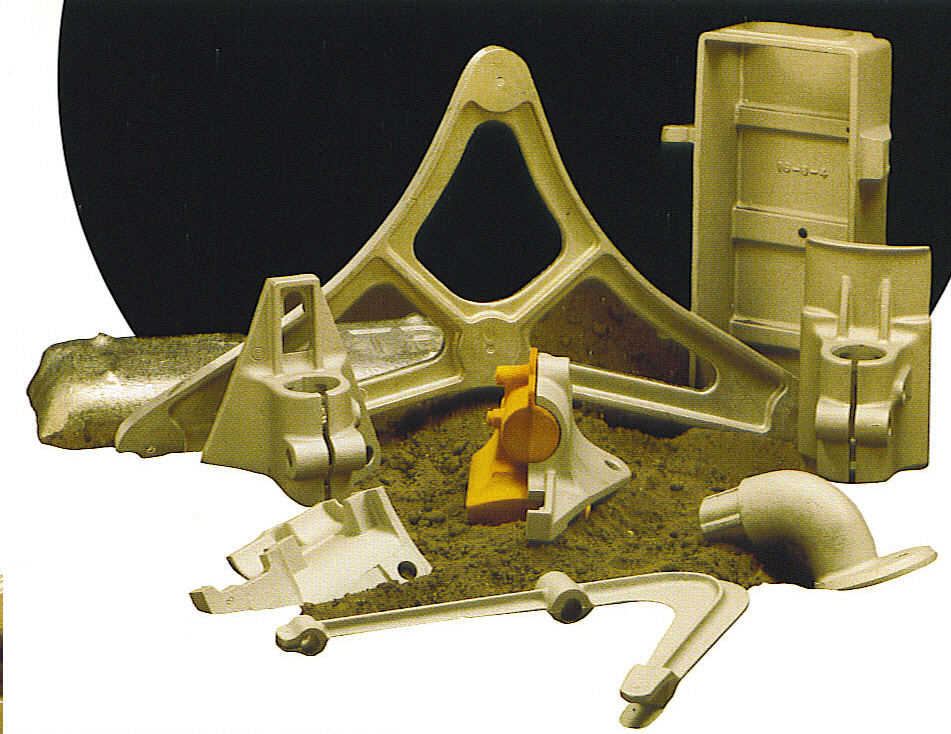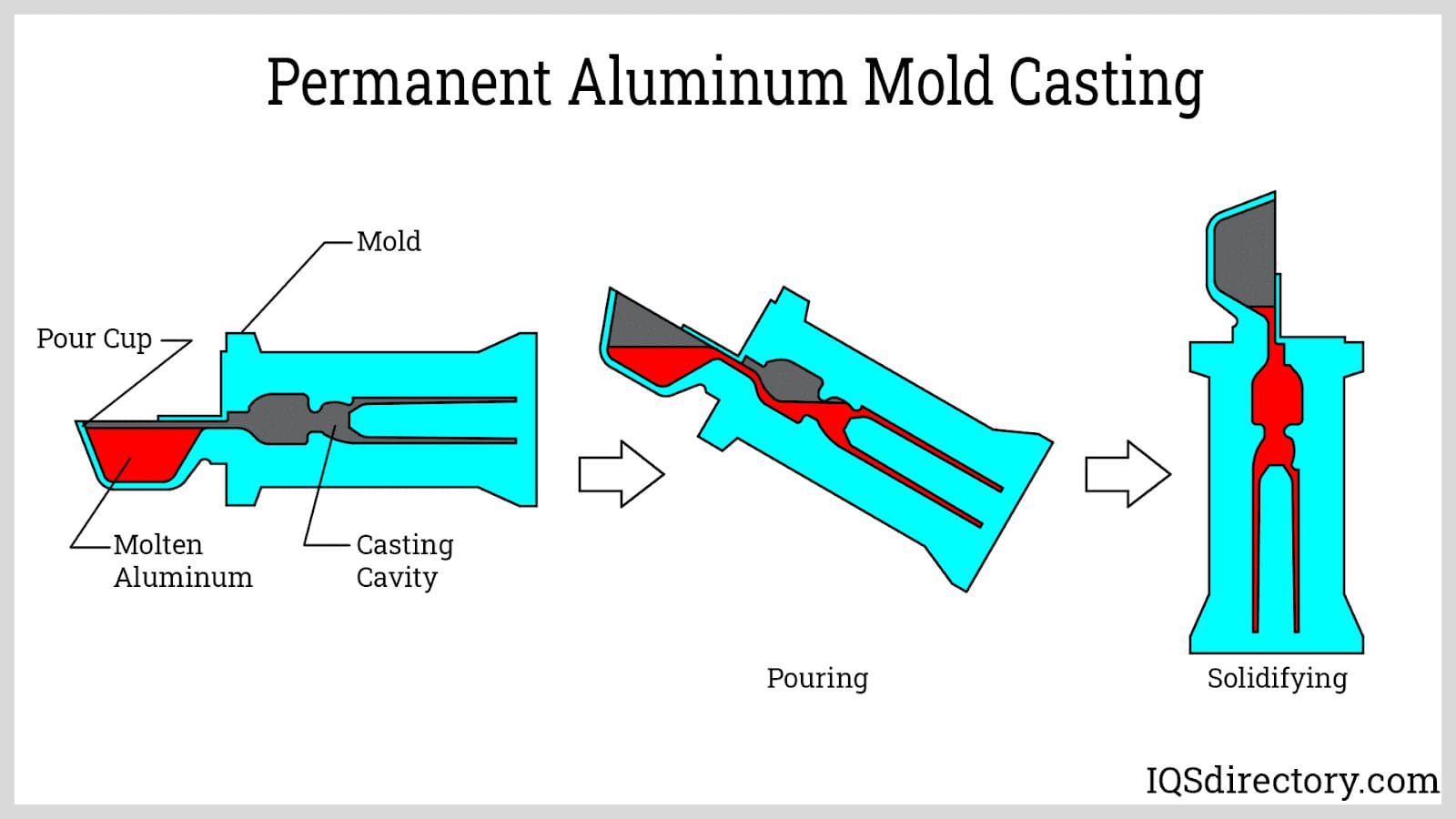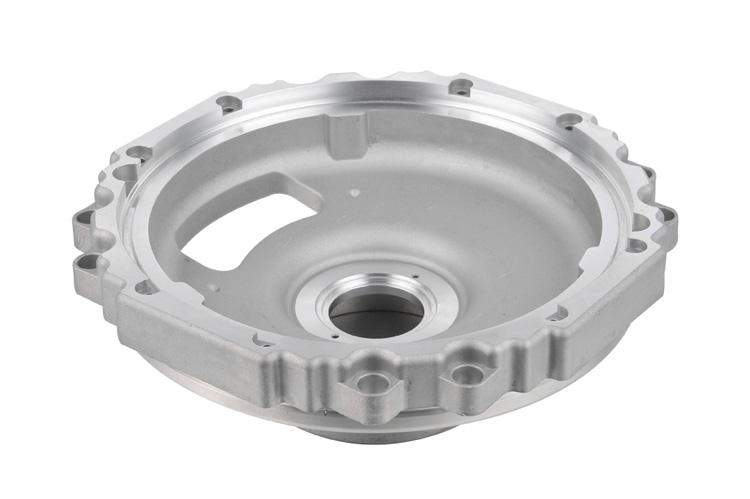Exploring the Versatile Makes Use Of and Applications of Aluminum Castings in Modern Industries
Light weight aluminum castings have actually become integral to various contemporary markets as a result of their special residential or commercial properties. They supply considerable advantages in weight reduction, thermal conductivity, and rust resistance. From automotive innovations to applications in durable goods and building, their convenience is impressive. The real extent of their impact prolongs past immediate advantages, hinting at wider ramifications for sustainability and efficiency. What exists ahead for light weight aluminum spreadings in an ever-evolving industrial landscape?
Automotive Sector Innovations
The automotive market has increasingly welcomed aluminum castings to boost car performance and efficiency. By utilizing aluminum, makers can create lighter parts, which add to enhanced fuel economy and minimized discharges. Trick applications consist of engine blocks, transmission instances, and structural components, where the material's strength-to-weight proportion delivers durability without including excess weight.
Aluminum spreadings likewise offer remarkable thermal conductivity, which assists in better warmth dissipation, thereby enhancing engine efficiency. Additionally, improvements in casting modern technologies, such as die spreading and sand spreading, enable the production of complex geometries, allowing for ingenious styles that optimize room and functionality.
The recyclability of aluminum aligns with sustainability goals in the automotive industry, advertising eco-friendly practices. As the market remains to introduce, making use of light weight aluminum spreadings is most likely to expand, driving further innovations in lorry design and performance.
Aerospace Developments and applications
While the aerospace sector remains to prioritize weight reduction and fuel efficiency, light weight aluminum castings have actually arised as a crucial product selection for numerous applications. Their lightweight nature, combined with high strength-to-weight proportions, enables considerable renovations in airplane performance and effectiveness. Light weight aluminum castings are typically utilized in architectural elements, such as fuselage structures and wing components, where lowering weight is essential.
Current innovations in aluminum casting modern technologies, including enhanced alloy solutions and accuracy spreading methods, have even more boosted the product's efficiency abilities. These innovations allow the production of intricate geometries and elaborate layouts while preserving architectural stability. In addition, aluminum's superb corrosion resistance guarantees durability and integrity in rough aerospace atmospheres.
As the aerospace field progressively embraces sustainability, light weight aluminum castings supply a recyclable remedy that straightens with environment-friendly techniques, making them a crucial aspect in the growth of next-generation airplane.
Durable Goods and Everyday Products
As consumers increasingly seek light-weight yet long lasting products for everyday items, aluminum castings have actually acquired popularity in various customer goods. The distinct buildings of light weight aluminum, including its resistance to corrosion and exceptional thermal conductivity, make it an optimal selection for items like pots and pans, home home appliances, and exterior equipment. Light weight aluminum cast pots and pans give also warm circulation, boosting cooking efficiency. Additionally, the use of aluminum in products such as bike frames and baggage assures a balance in between toughness and mobility. Makers appreciate light weight aluminum castings for their versatility, as they can be conveniently molded into intricate shapes while preserving architectural stability. The capacity to reuse light weight aluminum without degrading its buildings lines up with growing consumer choices for sustainable products. On the whole, aluminum spreadings are important to the manufacturing of resilient, useful, and cosmetically pleasing customer goods, meeting the demands of modern way of lives.
Building And Construction and Architectural Uses
Light weight aluminum castings have actually ended up being an essential component in construction and architectural design, specifically due to their toughness and lightweight nature. These properties make light weight aluminum an ideal choice for various applications, including architectural elements, facades, and ornamental features - Metal Castings. Engineers and building contractors increasingly utilize aluminum castings for window frameworks, doors, and roofing systems, enhancing both capability and aesthetics. The material's resistance to rust better extends its life expectancy, reducing upkeep costs and ensuring durability in varied ecological problems
Additionally, light weight aluminum can be easily built right into elaborate layouts, enabling ingenious architectural expressions. Its versatility assists in the development of personalized pieces that fulfill certain style needs, from elaborate barriers to complex assistances. As sustainability ends up being a top priority, light weight aluminum's recyclability includes in its appeal in green building and construction practices. Generally, aluminum castings are transforming the building and construction industry by supplying light-weight, sturdy, and aesthetically enticing services.
Electric and Electronic Elements
Aluminum spreadings play a necessary duty in the manufacturing of light-weight electrical enclosures, which boost mobility and efficiency in numerous applications. In enhancement, their superb thermal conductivity makes them perfect for warm sinks, making certain peak performance and long life of digital parts. Aluminum's conductive residential or commercial properties contribute to its usage in different electric conductors, highlighting its value in modern-day innovation.
Lightweight Electrical Enclosures
Light-weight electrical enclosures play a necessary duty in shielding delicate digital elements from ecological elements and physical damages. Built from aluminum castings, these enclosures are valued for their strength-to-weight ratio, making them optimal for numerous applications throughout industries. Their light-weight nature help in minimizing total system weight, which is essential in mobile and portable electronics. Aluminum's corrosion resistance improves resilience, extending the life expectancy of the enclosed elements. The capacity to mold and mildew aluminum into intricate forms permits customized designs, satisfying particular needs while guaranteeing efficient warmth dissipation. In addition, these enclosures can be quickly integrated right into existing systems, supplying flexibility and versatility in contemporary technical settings. Generally, lightweight light weight aluminum units significantly add to the performance of electronic gadgets.
Heat Sinks and Conductors
While many materials are utilized in electronic parts, light weight aluminum spreadings stick out for their efficiency in heat administration as warm sinks and conductors. Their exceptional thermal conductivity allows for efficient warmth dissipation, which is essential in stopping the getting too hot of electronic devices. Light weight aluminum's lightweight nature additionally boosts its viability for applications where weight is a considerable factor, such as in aerospace and automobile industries. In addition, light weight aluminum spreadings can be easily molded into complex forms, supplying style versatility for enhancing thermal efficiency. The deterioration resistance of light weight aluminum also contributes to the longevity and reliability of these elements in various atmospheres. As innovation advances and tools come to be more small, the need for efficient warm monitoring services, like aluminum castings, proceeds to grow.
Marine Sector Usage
The aquatic sector significantly relies on aluminum spreadings for their exceptional sturdiness and corrosion resistance. These residential or commercial properties make aluminum a suitable option you can try this out for various applications, consisting of watercraft hulls, engine parts, and aquatic equipment. The lightweight nature of aluminum castings allows boosted fuel effectiveness and much easier maneuverability in watercraft, which is necessary for both business and leisure vessels.

Aluminum spreadings likewise supply significant expense benefits because of their long lifespan and low upkeep demands, reducing the general operational expenses for aquatic operators. Additionally, the convenience of light weight aluminum enables intricate styles that can satisfy certain efficiency needs.
Producers in the aquatic market utilize innovative casting techniques to produce intricate shapes, making certain that elements meet extensive safety and performance standards. As the need for high-performance marine vessels expands, light weight aluminum castings are placed as a vital material in enhancing the capability and durability of marine devices.
Sustainability and Recycling in Light Weight Aluminum Casting

Aluminum Recycling Refine
Reusing light weight aluminum plays an important function in reducing environmental influence and conserving resources within the casting sector. The aluminum recycling procedure starts with the collection of scrap aluminum, which can include old parts, making waste, and post-consumer items. This scrap is then arranged, cleaned, and shredded into small pieces to promote melting.
Once prepared, the light weight aluminum scrap is melted in a heating system at lower temperature levels than key aluminum manufacturing, substantially reducing power usage. The molten aluminum is after that cast right into ingots or various other shapes for reuse in numerous applications - Metal Castings. This closed-loop system allows for the effective recuperation of light weight aluminum, protecting its buildings while lowering the need for virgin materials. Consequently, the reusing procedure is an important part of sustainable techniques in light weight aluminum casting
Environmental Advantages
While light weight aluminum spreading plays a crucial function in numerous sectors, its ecological benefits are especially impressive concerning sustainability and source preservation. The light-weight nature of aluminum adds to energy performance in transportation, decreasing fuel consumption and exhausts. Additionally, aluminum spreading promotes using recycled materials, significantly lowering the energy required for manufacturing contrasted to main light weight aluminum. This description recycling procedure lessens waste and decreases the environmental impact related to mining and refining raw products. Light weight aluminum is 100% recyclable without degradation of its properties, advertising a sustainable lifecycle. By choosing light weight aluminum casting, markets can considerably decrease their carbon impact while advertising resource performance, making it a crucial choice in the quest of eco-friendly production techniques.
Closed-Loop Solutions

Regularly Asked Inquiries
What Are the Trick Perks of Light Weight Aluminum Castings Over Various Other Products?
Light weight aluminum castings use lightweight buildings, excellent rust resistance, and high strength-to-weight proportions. They can be easily formed right into intricate forms, provide excellent thermal and electrical conductivity, and are economical, making them preferable over several alternative products.
How Is the Light Weight Aluminum Spreading Refine Eco Pleasant?
The aluminum spreading process is ecologically friendly because of its recyclability, reduced power usage, and decreased waste production. Its ability to utilize recycled materials minimizes the carbon footprint, promoting sustainability within manufacturing methods.
What Are Typical Difficulties in Light Weight Aluminum Casting Production?
Typical obstacles in light weight aluminum spreading production include preserving dimensional precision, managing thermal contraction, preventing defects like porosity and inclusions, ensuring appropriate mold and mildew design, and maximizing production performance while lessening material waste and environmental effect.
How Do Light Weight Aluminum Castings Compare in Price With Other Manufacturing Approaches?
Aluminum spreadings commonly offer affordable expenses compared to other manufacturing techniques, particularly for tool to high-volume manufacturing. Their lower preliminary tooling expenditures and reliable product use can lead to favorable economics over time.
What Future Trends Are Expected in Aluminum Casting Modern Technology?
Future fads in light weight aluminum casting modern technology are prepared for to include developments in automation, boosted alloy make-ups, improved recycling techniques, and the assimilation of 3D printing, all focused on enhancing performance, reducing prices, and reducing environmental influence.
Current innovations in aluminum casting innovations, consisting of boosted alloy formulations and accuracy casting methods, have actually even more enhanced the product's performance capacities. Aluminum spreadings have actually ended up being an essential component in building and building style, specifically due to their strength and lightweight nature. The light weight aluminum recycling procedure begins with the collection of scrap aluminum, which can consist of old parts, producing waste, and post-consumer article source items. When prepared, the light weight aluminum scrap is melted in a heating system at lower temperatures than primary aluminum production, greatly reducing power usage. Furthermore, aluminum spreading facilitates the use of recycled materials, significantly lowering the power needed for manufacturing compared to primary aluminum.